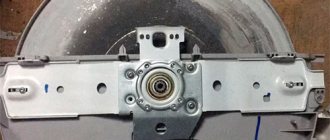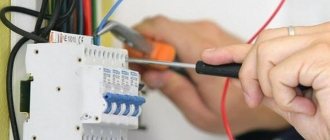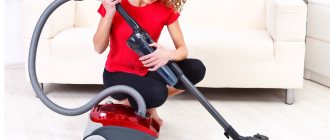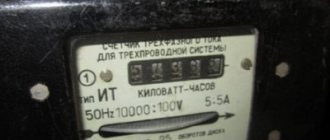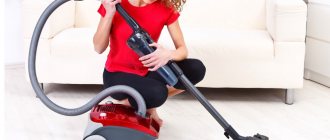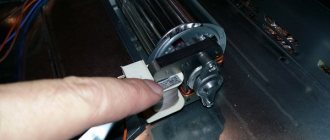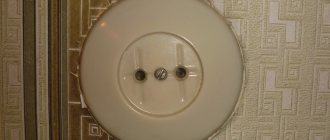The washing machine is used constantly in the family, especially if there is a small child. Its failure for a long time can create many problems, because hand washing takes a lot of time and effort. Therefore, it is better to spend time on maintenance and identifying breakdowns in the early stages, when repairs will cost less, and half of the problems can be fixed with your own hands. Potential problems are most often identified by ear. If the washing machine is knocking, then it is necessary to urgently interrupt the washing cycle and begin to identify the causes of the extraneous noise.
The main reasons why knocking occurs in a washing machine can be grouped as follows:
- Displacement of the counterweight (load stone).
- Failure of shock absorbers.
- The power filter is unscrewed.
- The balance is out of balance.
- Bearings are worn out.
- Foreign objects have gotten between the tank and the drum.
Now you need to analyze the causes of the malfunction for each item and the possibility of self-repair.
Counterweight (load stone) displacement
The washing machine tank is made of plastic, so under the influence of a drum loaded with laundry, it vibrates quite strongly. The counterweight itself is a cement or plastic block that is attached to the tank and stabilizes it. That is, it makes it less mobile under high dynamic loads on the drum. Displacement or destruction of the counterweight is one of the simplest, but far from harmless, breakdowns that need to be quickly corrected. This malfunction is diagnosed as follows: the drum begins to knock when spinning at maximum speed or with a large load, and the sound comes from the bottom.
Destruction of the counterweight
If the bolts holding the counterweight are loosened or completely unscrewed, the counterweight may become dislodged or the drum may have a lot of play. This problem can be fixed quite simply, you just need to tighten the bolt. And to prevent this from happening again, you can take the bolt a little longer and put a lock nut between it and the washer.
If the counterweight is destroyed, the situation is much more serious. Cement stone is practically irreparable. You need to go to a repair shop and just buy another one.
Bottom counterweight
You can get to the counterweight to secure it (adjust it) as follows:
- The dispenser tray is fully extended. To do this, you need to press firmly on the central latch.
- Several screws will be visible in the opening that appears. Unscrew them and remove the control panel.
- On some models, you may need to additionally press out the plastic latches; we do this carefully using a flat-head screwdriver.
- At the upper end of the front panel you can see the heads of screws and bolts. Unscrew them and remove the front panel.
- That's it, we got access to the counterweight located at the bottom of the tank.
IMPORTANT! Before disconnecting the contacts on the dashboard, it is advisable to photograph them with a mobile phone, so that later you do not play the sapper of which wire to plug in where
Upper counterweight
Again, on some models the counterweight units may be located at the bottom, while on others they may be located at the top or rear. The exact position can be found according to the diagram in the data sheet, which is attached to each washing machine.
Failure of shock absorbers (dampers, springs)
A knocking sound in the washing machine may occur if, as a result of prolonged and intensive use, the springs have stretched or the shock absorbers have weakened. These elements are designed to dampen strong vibrations of the tank during spinning. Budget models of washing machines use only shock absorbers.
More modern and expensive models use a combination of dampers installed at the bottom of the tank and springs on which it is suspended from the top of the body.
As for springs, the situation here is very simple. Definitely replace, and no alternative options. It is better to buy dampers and shock absorbers and install new ones. However, if you want to work and don’t want to spend money, then you can try to repair it yourself. As a rule, breakdowns of these parts can be as follows:
- Wear gaskets: cut from rubber of appropriate thickness.
- Broken rod: solder (temporary measure, use the washing machine without spinning).
- Shock absorbers may additionally have a cracked return spring: replace with a new one
Important!
Deciding whether or not to fix these breakdowns should be based on their criticality. But, in my experience, it is better to install new parts. Moreover, even if one damper fails, a pair will have to be replaced. This will guarantee that further operation will be long-lasting and problem-free.
What exactly is in front of you, a damper or a shock absorber, is difficult to say without disassembling it. You need to focus on the presence of upper springs in the washing machine.
First you need to diagnose the damage to the shock absorbers. To do this, remove the top cover of the washing machine. On most front-loading models, it is removed in the same way. Two screws are unscrewed from the back of the case, and the cover itself is slightly pushed forward. Inside you need to identify the tank (plastic, white, round, large) and press it with a little force and release it sharply. If the tank takes its original position immediately without unnecessary movements, then the dampers and shock absorbers are in order. If oscillatory movements in different directions continued for some time, then it is necessary to begin repairs.
Sequence of actions for replacing dampers or shock absorbers:
- After diagnostics, the top cover of the washing machine has already been removed.
- We remove the front instrument panel (how to do this was in the previous section).
- We bend the sealing collar and the metal clamp that presses it. Carefully pry it up with a screwdriver and remove it.
- Unscrew the hatch lock bolts. The official name of UBL is a hatch blocking device. Disconnect the wires from it and pull it out.
- Find the screw heads of the front panel and unscrew them.
Removing the Damper
To quickly and easily remove a damper or shock absorber, perform the following steps:
- We put a nut on the plastic rod to fold the latches.
- On the other side, carefully pull with pliers.
- Simply unscrew the bolt at the bottom.
How to repair it yourself
Before you begin the repair, you need to familiarize yourself with the general recommendations that must be followed when carrying out the work:
- Blackout. First, the equipment is disconnected from the electrical network to protect yourself from electric shock.
- Removing the back cover. To get to the inside of the washing equipment, you will have to unscrew the back panel, which is attached with bolts.
- Replacement of parts. Broken components that cause the knocking sound must be replaced with new ones.
See also
How to care for parquet boards at home and the best remedies
The surge protector is unscrewed
A fairly common cause of knocking noise in a washing machine is a loose power filter. This device is necessary so that the electrical impulses generated during the operation of the washing machine do not turn into parasitic interference from the household electrical network of the apartment. Simply put, so that the lights in the house do not blink due to the constant and frequent switching on and off of the electric motor and heating element of the washing machine.
Network filter
In fact, this defect is not considered a serious breakdown, since it does not lead to further damage to the mechanisms of the washing machine. Physical impact from vibrations and shocks on the wires and the surge protector housing can lead to breakdown. As a result, anyone who touches the washer may receive a noticeable shock.
To eliminate the defect, just screw the surge protector into place. For most models, it is located at the top of the case near the hole for the power cord. To access, you need to remove the top cover, as mentioned earlier.
Make sure the machine is level
If the machine's legs are not level, it will begin to shake and knock during the spin cycle. To fix the problem:
Make sure the machine is on a level surface. It often happens that one leg ends up in the groove between the tiles or stands on the baseboard. Move the machine so that it is on a level surface.
Move the machine away from the wall and tilt it so that the front legs are visible. Have someone hold the machine, otherwise you will not be able to do the following steps, or place a block of wood under it. Be careful not to touch wires or cables.
Make sure the legs are the same length. You can use a ruler, measuring tape, or tape. Measure the height to the nearest millimeter - even a small difference in the legs will lead to significant swaying and knocking. If the legs are the same length, make sure they fit snugly on the floor.
If the legs are of different lengths, adjust them in height. To do this, it is enough to simply twirl them by hand. But in most machines they are fastened with a nut, which must be loosened with a wrench in order to shorten or lengthen the legs. Make sure you screw the nut back to adjust the height. Alternatively, you can place a folded piece of paper or a piece of carpet under the shorter legs.
If you still can’t balance the machine, you can place special rubber vibration absorbers under the legs, sold in hardware stores.
Article on the topic: How to knock out a bearing from a Samsung washing machine drum
Of course, you can also use a building level by placing it on the top of the washing machine. But this may not work if the floor is on a slope. So first check the levelness of the floor using the same building level.
The balance is out of balance
Both at the first start and as a result of long-term use, the balance of the washing machine may be disrupted. In this case, the washing machine knocks strongly from the contact of the body with the walls, the legs with the floor, or the vibration of the tub and drum inside. You can detect skew in any direction by simply shaking the device body. You can more accurately determine the need for rebalancing by using a water level. If, after checking, a skew is detected, then it is necessary to tighten the adjustable legs using an open-end wrench.
Anti-vibration stands
If the floor is too uneven or fragile (vibrates under dynamic loads), you can use special silicone supports. They will help raise the machine body above the floor level, provide a large area of contact with the base, and will additionally dampen minor vibrations.
Important!
In older models of washing machines, the phenomenon of imbalance occurs quite often. Usually if there is too much laundry or large items being loaded. To correct this situation, you need to stop the wash cycle and drain the water. To do this, unscrew the filter hole at the bottom of the washing machine. After this, the door will unlock, and it will be possible to remove some of the things or arrange them more evenly. With new models, such errors do not occur, since almost all of them have the “Imbalance Protection” function.
Fault diagnosis
It is not necessary to contact the service center if strange sounds appear. Some breakdowns can be fixed on your own, the main thing is to correctly identify the source of the problem.
To do this, it is necessary to evaluate the nature of the sounds produced:
- The knocking noise occurs during washing and spinning. This noise may indicate that there is an object caught in the space between the tank and the drum. They usually penetrate through the perforations or sealing rubber of the hatch. If the object is not removed in time, it can block the pump and break the pipe. Small items left in pockets can also cause noise. For example, coins will make characteristic sounds during the cycle. A knock can also occur due to the contact of rivets and buttons of clothing with the walls of the drum, or when things are placed incorrectly. The machine may also make loud noises when washing due to improper installation. To diagnose the position of the device, you need to use a level. If the machine is installed incorrectly, the measurements will reveal a skew. Another explanation is a loose filter.
- Strong creaking and grinding noise when drum speed increases. Usually such noise indicates bearing failure. They are protected by an oil seal from moisture, but over time the lubricant is washed out. This leads to wear of the rubber part and then the bearings.
- Clicks and squeaks when spinning the drum. The explanation for the noise is damage to the dampers or shock absorbers. Their function is to restrain strong vibrations during spinning at high speeds; they support the tank from below.
- Humming, vibration, or loud noise during cycle. Such sounds appear due to the destruction of the counterweight. It serves to maintain balance. Another variant of the malfunction is that the counterweight is not destroyed, but its fastening is simply weakened.
- A strong buzzing sound accompanied by a stop in the cycle. This noise is due to a faulty pump.
Bearings are worn out
If after washing you get wet clothes, and the washing machine knocks during the spin cycle, both at high and medium speeds, then the reason is mainly the failure of the bearings. You can additionally verify this by opening the hatch and shaking the drum away from you. If there is significant play or a significant gap appears between the edge of the drum and the tank, then this is a guaranteed confirmation of bearing failure.
Correcting this defect is a rather labor-intensive procedure that requires a certain number of special tools:
- Set of flat and Phillips screwdrivers.
- Set of open-end wrenches.
- Adjustable wrench (preferred).
- Rubber or wooden hammer. You can replace it with a regular one, but you will have to hit it through thick rubber.
- Chisel or wrench.
- Lubricant, lithol recommended.
Disassembling the case is carried out as follows:
- The back panel is removed. To do this, you need to unscrew all the screws located around the perimeter. Some models require additional removal of the cover.
Remove the back panel
- All wires leading to the heating element and sensors are carefully disconnected from the tank. Naturally, they must be photographed first.
Disconnect all wires
- The belt leading from the electric motor to the drum drive - the flywheel is removed.
- The heating element is removed. To do this, you need to loosen the clamping nut and slightly push it inward, releasing the cuff. Then remove it by turning it at an angle.
- We fix the flywheel so that the flange does not rotate. It is better to do this not with a screwdriver, but with a wooden stick; there is less risk of piercing the drum.
- The fixing bolt is twisted. This requires significant effort. After which you can remove the flywheel.
Disconnect all wires
- Next, you need to unscrew the bolts that fasten the two parts of the tank and are located along its perimeter. This must be done to remove the drum without disassembling the entire washing machine. Thus, the first part of the tank with shock absorbers and an electric motor attached to it remains in place. The drum is removed and all further actions are carried out with it.
To remove the bearing, perform the following steps:
- The shaft is knocked out with a rubber or wooden hammer. You don't need to apply too much force to avoid deforming it.
- Once the drum is removed from the shaft, the oil seal and bearing will be visible in the hole.
Remove the oil seal and bearing
- The oil seal can be removed by simply poking it with a screwdriver. If this does not work, then use a chisel. Place the cutting edge between the tank and the seal and hit it lightly with a hammer several times. Once the seal is removed, the outer and inner bearings are removed.
- The groove must be thoroughly cleaned of accumulated dirt, limescale, etc. For this, both chemical detergents and sandpaper are used.
Replacing pre-purchased bearings is done in the reverse order. First, the inner ring is installed in the socket, then the bearings, then the oil seal, pre-lubricated with lithol.
Install bearings
Before installing the tank on the shaft, it must also be thoroughly cleaned and lubricated.
Foreign objects have gotten between the tank and the drum
It is possible that the drum in the washing machine suddenly starts knocking, but there seems to be no particular reason for this. In this case, you need to stop the wash cycle, drain the water using the function or through the filter hole and remove all items from the drum. Turn the drum several times by hand. If you hear a characteristic knocking sound, it means the cause is a foreign object. Based on practice, in the vast majority of cases this item is a wire from a women's bra.
Where might the item you are looking for be located? It is necessary to carefully check the areas behind the hatch cuff. The second place where small objects accumulate is the filter. In fact, this is what it is intended for. In particularly difficult cases, it will be necessary to remove the heating element.
Remove the heating element
It is located differently for different models. But in most cases, to access it you need to remove the front panel. We have already talked about how to do this earlier. Having gained access to the heating element, you need to disconnect the contacts and unscrew the central bolt. After this, the device can be removed.
It is necessary to disconnect the contacts and unscrew the central bolt
It makes a lot of noise - is this a breakdown or normal?
During operation of the device, noise may sometimes even be a normal situation. Some sounds that Indesit makes are not a sign of failure.
- water inlet;
- pump operation;
- heating water;
- rotation of the drum during the spin process;
- clattering transition to a new stage of the washing program.
You should start to worry when the car suddenly starts making strange sounds that are not typical for it. Most often, they make themselves felt precisely when the drum is actively rotating and under high load. If there is noise in the device, it is important to correctly determine its cause.
In some cases, such a sign is not a breakdown. Each device has a maximum permissible noise value .
This indicator is indicated in the documents for the machine. Typically this is between 60 dB and 72 dB. If during operation the noise level is within the limits specified by the manufacturer, this is not a malfunction, but corresponds to normal operation.
Summing up
Now you know why the washing machine knocks and how to fix the most common defects. Now it’s up to you to choose whether you can fix the defect yourself, but if you have doubts about what will happen, it’s better to contact a specialist. I would like to know your opinion whether the information presented in the article was useful or not. In addition, you may have encountered other causes of strange sounds in your washing machine. We will be grateful if you share your experience in detecting and eliminating other breakdowns.
